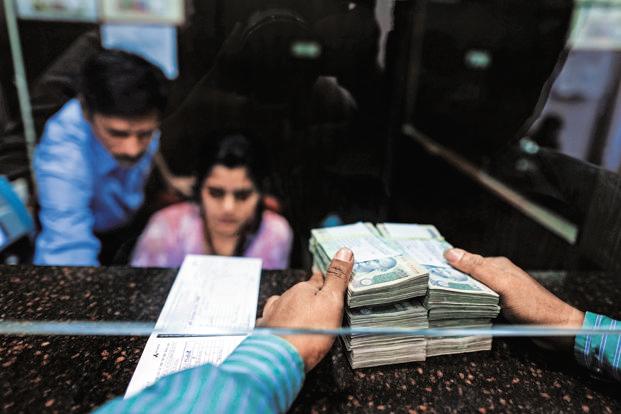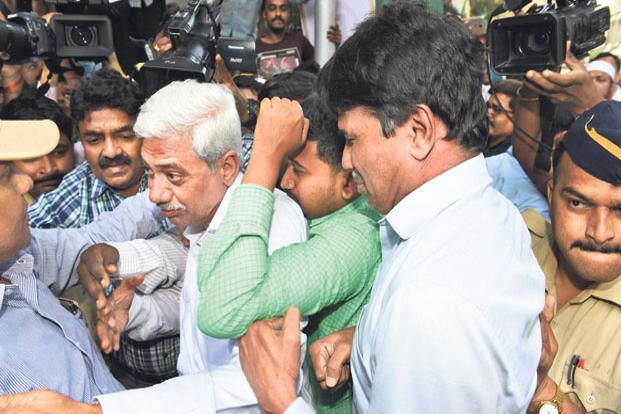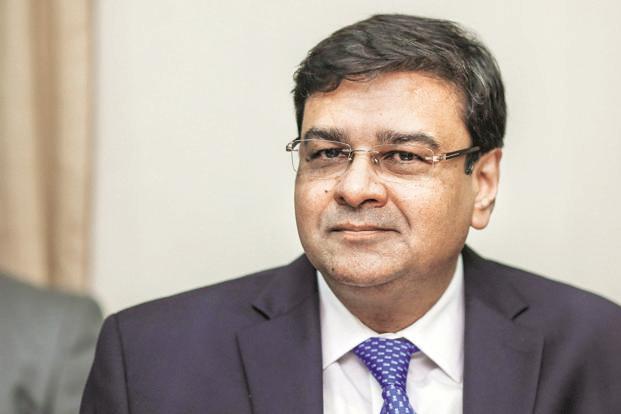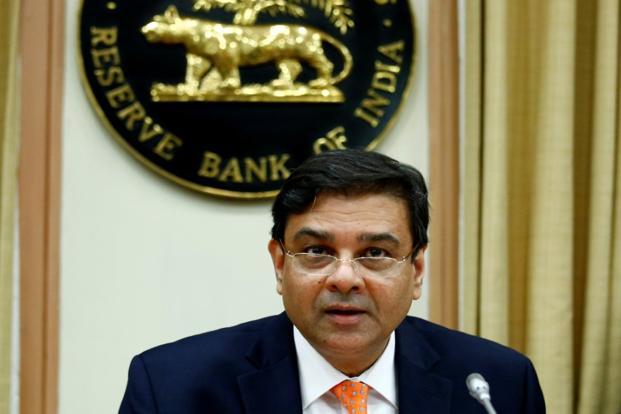On Friday, most state-owned bank stocks rose. For a few of them, the rise was spectacular. For instance, the Oriental Bank of Commerce (OBC) stock jumped 6.6% and Bank of India (BoI) 5.2% on the National Stock Exchange. The Nifty PSU Bank Index, a measure of public sector banks’ shares, gained 3.31% on Friday compared with less than a quarter percentage point rise in the exchange’s benchmark 50-stock Nifty.
Incidentally, in the quarter ended 31 December, both OBC and BoI had at least 13% gross bad loans on their books. After setting aside money, OBC’s net bad loans were 9.68% of its overall loan book; for BoI, 7.09%. Still their stocks jumped, along with most other public sector banks’, after finance minister Arun Jaitley announced that the government has been working on a radical proposal to resolve the bad loans crisis in Indian banking.
Banks bat for relaxed RBI norms on bad loan resolution as deadline looms
I presume the Reserve Bank of India (RBI) and the government have been discussing this radical proposal for weeks. It appears to have been galvanized by, and likely evolved around, what the RBI deputy governor Viral Acharya outlined in his maiden speech—on “Some Ways to Decisively Resolve Bank Stressed Assets”—delivered at an Indian Banks’ Association conference in February. Some of the banking sector analysts have found the proposal too academic and not feasible in the Indian context and the “status quoist” bankers are not too excited since it talks about resolving the bad loan problem in a time-bound, decisive manner.
I will be happy if indeed the proposal turns out to be the blueprint for resolving the bad loan problem in Indian banking. Collectively, all listed banks recorded around Rs7.2 trillion gross bad loans in the December quarter; it will rise further in March. The state-run banks are far more affected by this malaise than their counterparts in the private sector. More importantly, this does not represent the bad loan scenario accurately.
Every bank is carrying dollops of restructured loans on its books and a portion of that is likely to turn bad; at least Rs3 trillion worth of bad loans have been written off by the banks in the past few years and there is no clarity on how much bad loans are on the books of non-banking financial companies (including microfinance entities), regional rural banks, housing companies and cooperative banks. If we add all of them, the bad loan figures might look staggering.
Not a blanket bad bank
What is interesting is that the plan has not proposed a blanket bad bank, separating the bad loans of troubled banks from performing loans and creating a pool without any clear resolution path.
It is also not in favour of leaving things to the banks, as most bank managements are not in a hurry to resolve the problem. Given a choice, they would like to postpone the inevitable as they are not comfortable getting rid of bad assets at a steep discount for fear of being hounded by investigative agencies. This is one of the many reasons why they would like to delay the resolution process and instead focus solely on persuading the government for capital every year.
The proposal is, instead, to create special structures to deal with stressed loans keeping in mind the turnaround potential of the companies that have borrowed money from banks.
One such structure is a private asset management company to handle the creation, selection and implementation of a feasible resolution plan for a quick turnaround of the 50 largest troubled companies in telecoms, metals (iron and steel, in particular), engineering-procurement-construction and textiles within a fixed time frame. One or more credit rating agencies will rate the resolution plans and the promoters of the companies will have no say in the restructuring plan.
The banks will choose from among those resolution plans that ensure adequately high credit rating of the restructured entity, and likely take a deep haircut approved by the government (or likely, by an approved oversight committee) and accepted by the vigilance authorities.
The insolvency code will come into play only if the process to arrive at an acceptable resolution plan fails.
For those sectors such as power, which suffer from excess capacity and need a longer-term solution, the plan is to create a quasi-government body – a national asset management company with a minority government stake. This will raise debt, possibly government-guaranteed, and manage the asset reconstruction companies and private equity firms which will be responsible for turning around the stressed companies.
Radical departure from the past
The proposal is a radical departure from measures that RBI has so far adopted to resolve the bad loan problems.
The platforms such as corporate debt restructuring (CDR), strategic debt restructuring (SDR) and the scheme for sustainable structuring of stressed assets (S4A) which have been used to clean up the bank balance sheets have left the job to the banks. Here, for the first time, we are seeing an aggressive regulatory intervention with a clear incentive structure. Those banks which will not be able to implement them or do not coordinate well with others run the risk of being punished.
SDR, introduced in June 2015, gave banks the power to convert a part of their debt in stressed companies into majority equity but it didn’t work because promoters delayed the restructuring, dangling the promise of bringing in new investors. Before that, in February 2014, RBI had allowed a change in management of stressed companies. The principle of the restructuring exercise was that the shareholders must bear the first loss and not the lenders; and the promoters must have more skin in the game.
The platforms such as CDR, SDR and S4A, which have been used to clean up the bank balance sheets, have left the job to the banks
This was done after the regulator realized that the CDR mechanism, put in place in August 2001, could not do much to alleviate the pain of the lenders. Any loan exposure of Rs10 crore and more (including non-fund limits) and involving at least two lenders could have been tackled on this platform. Of the 530 cases with loans worth over Rs4.3 trillion that were approved for restructuring at the CDR cell as on 31 December, 2016, 264 cases with loans worth Rs1.25 trillion failed their restructuring agreements.
The S4A scheme allowed the banks to convert up to half the loans of stressed companies into equity or equity-like securities. Meant for restructuring companies with an overall exposure of at least Rs500 crore, this scheme can come into play only when the bankers are convinced that the cash flows of the stressed companies are enough to service at least half of the funded liabilities or “sustainable debt”. Not much has, however, got resolved under this scheme either.
The most important point in the new proposal is that it has subtly shifted the focus from banks to the larger economic scenario, as a banking crisis can morph into a larger crisis that hits the industrial growth in Asia’s third-largest economy. Without dissecting the economic viability of underlying assets and finding ways of restructuring them, if we want to save the banks first and take care of the industries later, it could be too late to lift the economic growth and create jobs. We can have healthy banks but who will they lend to? In other words, the suggestion is not to look at the health of the banking sector in isolation but to treat the sick banks and sick industries at the same time.
Bang for the buck
For that, a big hit on the bank balance sheets and additional bank recapitalization is a given. The best way to get the maximum bang for the buck is to make the banks understand that they would need to opt for a deep haircut or get rid of the bad assets at a steep discount before the assets are nurtured back to health by one of the two agencies.
The proposal has also called for a significant restructuring of the public sector banks, including raising private capital, sale of assets or securitizing them, merging banks and getting rid of non-performing work force by offering voluntary retirement schemes and replacing them with a younger, digitally-savvy talent pool. Those banks which show no signs of improvement would be put under the so-called prompt corrective action plan of RBI that curbs their growth. It’s refreshing to hear the Indian banking regulator talk about “tough love” and allow the market forces to decide which banks should be around and which shouldn’t.
If both the banking regulator and the government are ready to bite the bullet, the banks will be left with no choice but to toe the line.
If both RBI and the government are ready to bite the bullet, the banks will be left with no choice but to toe the line.
And Friday’s market reaction suggests many banks might, in fact, be better off if their stressed assets are resolved swiftly. Their valuation will go up and if the government wants to divest its stake in some of the banks, it will be able to make some money and bring down the fiscal deficit.
Is this the silver bullet to address the problem which is getting deeper by the day? I don’t know. But there is little doubt that we need to get the job done and time is of the essence. Neither the regulator nor the government can remain in denial anymore. The days of forbearance are over. One of the reasons why global rating agencies seem unwilling to raise the sovereign rating of the world’s fastest-growing large economy is its not-so-healthy banking system.
In short, it’s now or never.



